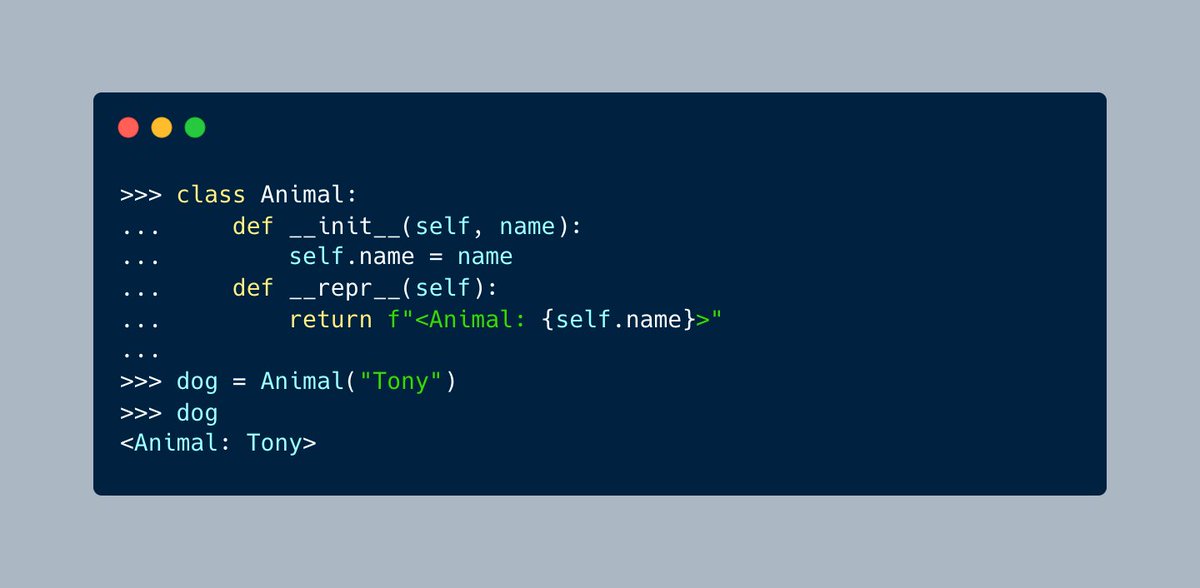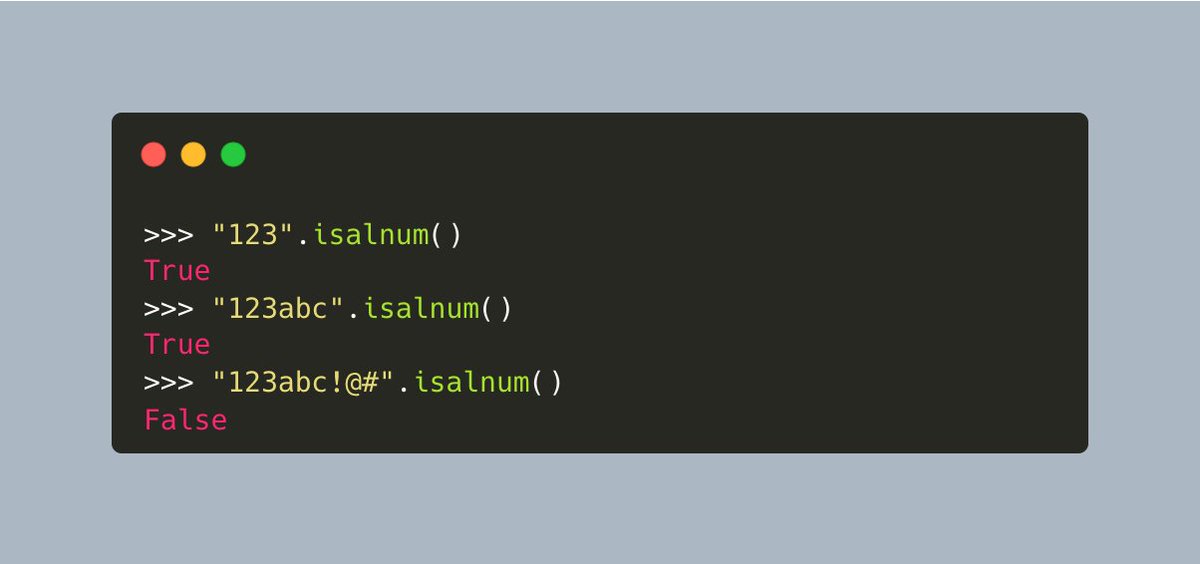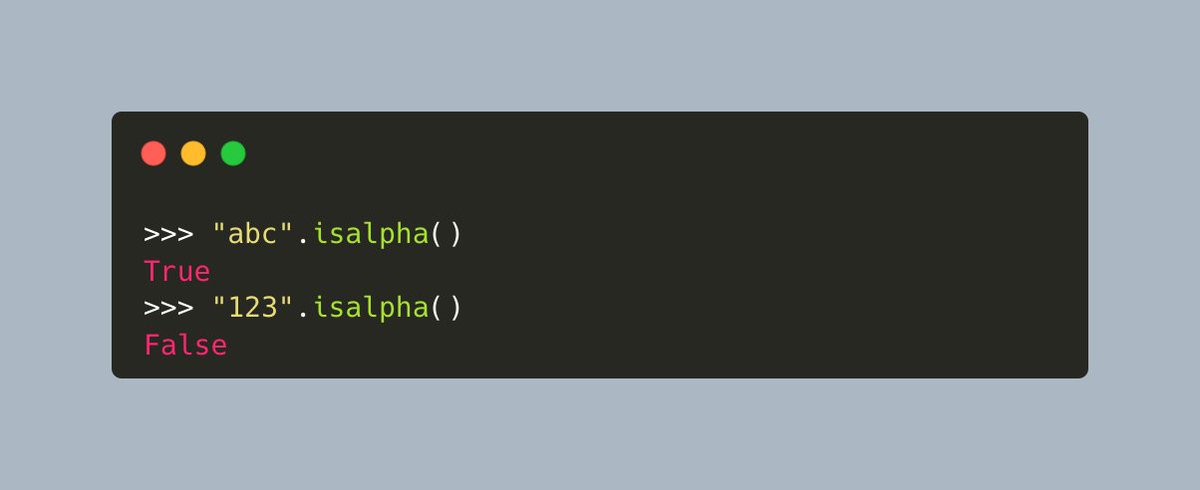
#Python includes a handy little function called `repr()`.
`repr()` will return a string containing a printable representation of an object.
Let's see how you might use it!
#python_builtins_by_driscollis
🧵🐍👇
`repr()` will return a string containing a printable representation of an object.
Let's see how you might use it!
#python_builtins_by_driscollis
🧵🐍👇
The `repr()` function will call the `__repr__` dunder method of a class.
This method returns a string that is primarily for developers and will never be seen by the end-user.
Let's see what happens when you call `repr()` on a class object without a `__repr__` method
This method returns a string that is primarily for developers and will never be seen by the end-user.
Let's see what happens when you call `repr()` on a class object without a `__repr__` method

Now let's add a `__init__()` and a `__repr__()` method to your class so you can modify what is returned so that it is more useful
Notice that now it returns what object type it is along with the name attribute. Before, all you got back was the memory address
Notice that now it returns what object type it is along with the name attribute. Before, all you got back was the memory address

Thanks for checking out my mini-thread on the `repr()` function.
If you'd like more information about this function, check out the docs:
docs.python.org/3/library/func…
If you'd like more information about this function, check out the docs:
docs.python.org/3/library/func…
• • •
Missing some Tweet in this thread? You can try to
force a refresh
















